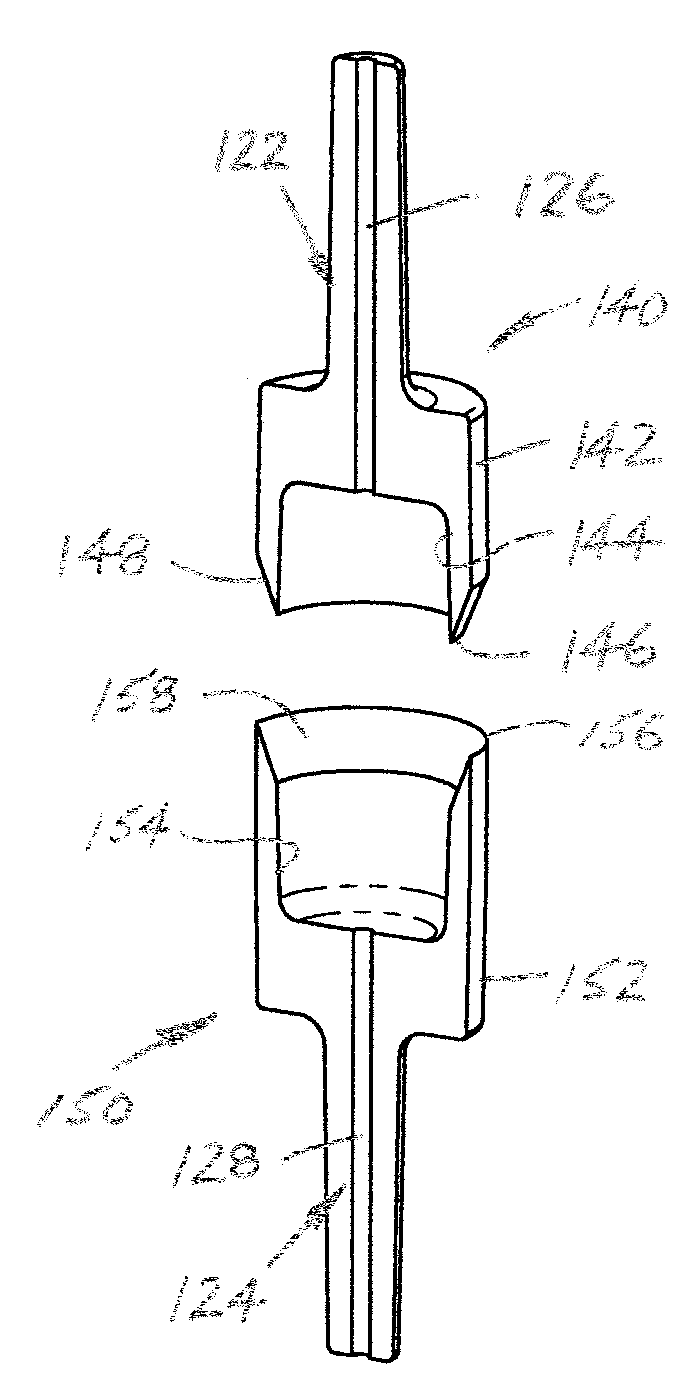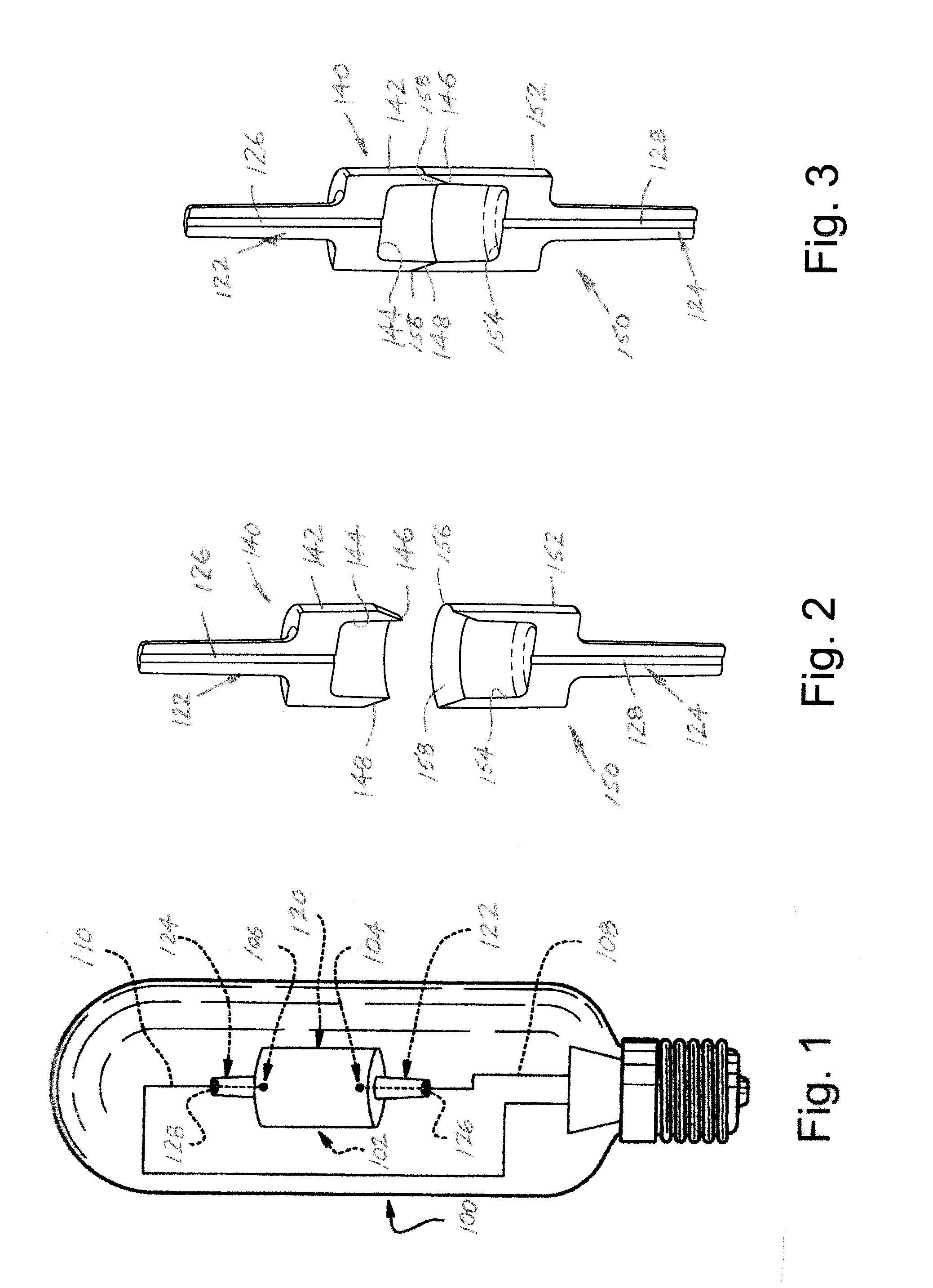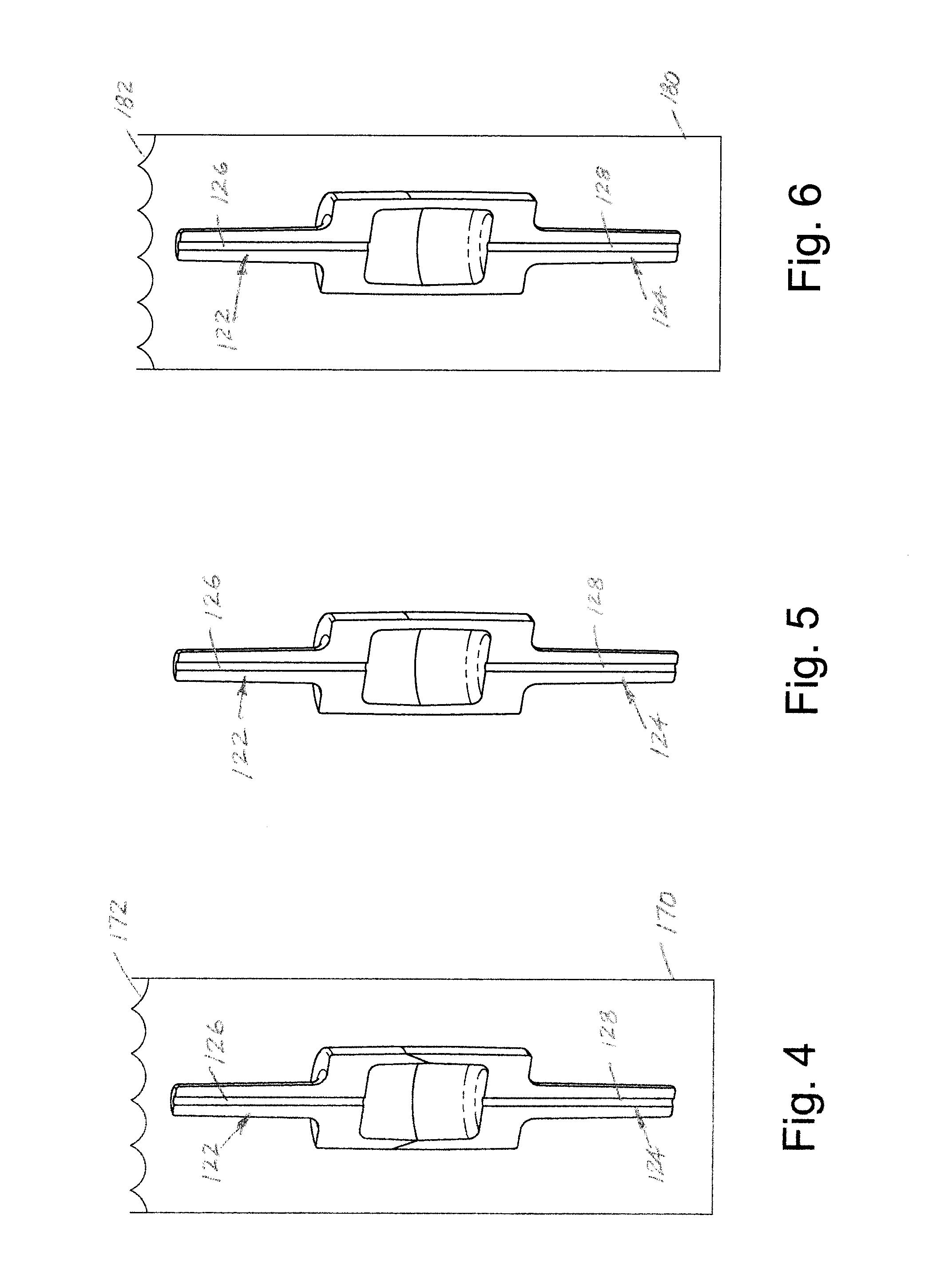Green joining ceramics
- Summary
- Abstract
- Description
- Claims
- Application Information
AI Technical Summary
Benefits of technology
Problems solved by technology
Method used
Image
Examples
Embodiment Construction
[0033]A standard construction for ceramic metal halide (CMH) lamps includes a three-piece ceramic component where an extruded body tube is capped on either end by an injection-molded part. A required hermetic seal is obtained between the molded leg portions and the central tubular portion, particularly when debindering and sintering have been completed. For example, the arc tube preferably comprises alumina (Al2O3) having a purity of about 99.98% and a surface area of about 2-10 m2 / g before sintering. The alumina powder can be doped with magnesia to inhibit grain growth, for example in an amount equal to about 0.03-0.2%, preferably about 0.05% by weight of the alumina. Other ceramic materials which may be used include non-reactive refractory oxides and oxynitrides, such as yttrium oxide, lutetium oxide, and hafnium oxide, and their solid solutions and compounds with alumina, such as yttrium-aluminum-garnet and alumina oxynitride. Binders which may be used individually or in combinat...
PUM
| Property | Measurement | Unit |
|---|---|---|
| Time | aaaaa | aaaaa |
| Time | aaaaa | aaaaa |
| Temperature | aaaaa | aaaaa |
Abstract
Description
Claims
Application Information
 Login to View More
Login to View More - R&D
- Intellectual Property
- Life Sciences
- Materials
- Tech Scout
- Unparalleled Data Quality
- Higher Quality Content
- 60% Fewer Hallucinations
Browse by: Latest US Patents, China's latest patents, Technical Efficacy Thesaurus, Application Domain, Technology Topic, Popular Technical Reports.
© 2025 PatSnap. All rights reserved.Legal|Privacy policy|Modern Slavery Act Transparency Statement|Sitemap|About US| Contact US: help@patsnap.com



